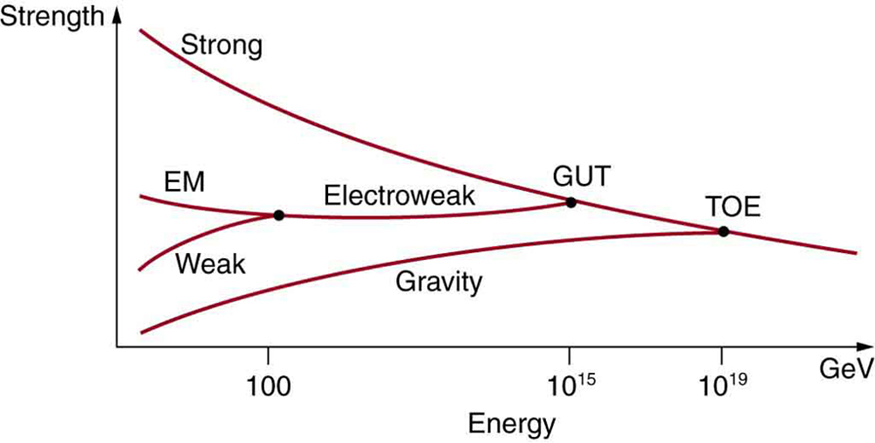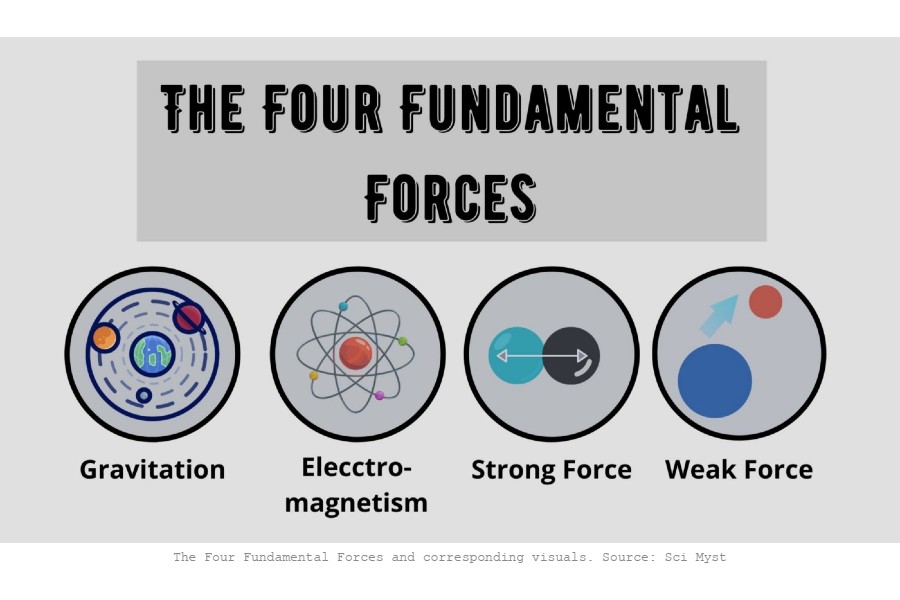Road To String Theory
Road To String Theory
Rayyan Abdullah
Ever since mankind crawled out of caves, curiosity and quest for understanding the nature and the need for making life better, drove us to the future marked with developments. From lighting the first fire to exploring the cosmos to development of most fundamental theories, like String Theory to describe the nature.
Fundamental Foces
Through extensive research and
experimentations by our predecessors, we have come to know, for now, that there
are four fundamental forces through which matter interacts. Namely, strong,
electromagnetic, weak and gravitational force. Since gravitational and
electromagnetic forces have infinite range, we have been able to describe them
classically. Newton described gravitation through his famous inverse square
law, and a similar law for electric forces was given by Coulomb. Later,
Einstein reformulated gravitational theory, still classically, by his General
Theory of Relativity which is based on the idea, that the presence of mass
bends space-time itself and as the name suggest, it is a generalized form of
special theory of relativity where space and time are taken on the same footing.
Electric and magnetic forces used to be thought of as different forces, but experiments by Hans Christian Oersted in 1819 showed that they are in fact inter related. Later developments in this regard by Andr´e-Marie Amp`ere, Michael Faraday and James Clerk Maxwell unified the two forces into one, called electromagnetic force. Special theory combined with electromagnetism leads us to classical electrodynamics, where field strength tensor incorporates both electric and magnetic fields and the corresponding equations of motions are called Maxwell’s equations.
Since strong and weak forces are
short range forces, they cannot be described classically. Hence, the next major
unification was performed by Abdus Salam, Steven Weinberg and Sheldon Glashow
was a quantum one. Developed in the 20th century by Erwin
Schrodinger, Werner Heisenberg, Paul Dirac and others, the Quantum Mechanics
which describes nature at small scales, was a paradigm shift. In quantum
mechanics classical observables become operators which acts on the
wave-function of a system and gives the corresponding observables. If two
operators fail to commute, the corresponding observables cannot be measured
simultaneously. But this was non relativistic theory, applicable for particles
with velocity much smaller than the velocity of light (v << c).
But for relativistic particles, we need to use relativistic quantum mechanics.
But relativistic quantum mechanics gives us negative energy solutions and
infinite probability densities. Hence its Hilbert space is incomplete. In order
to get the complete Hilbert space, Classical Field theory was combined with
Special Theory of Relativity to get Quantum Field Theory.
 |
| Strength of Fundamental Forces | Source: PhyiscsLibertexts |
Standard Model & GUTs
Electromagnetic, strong and weak
interactions were described quantum mechanically. Richard Feynman formulated
quantum theory for electromagnetic force called quantum electrodynamics, these
interactions are mediated by photons. Quantum theory for strong interactions is
known as quantum chromodynamics whose mediating quanta is the gluon. Electromagnetic and weak forces were unified
through quantum theory by Salaam, Weinberg and Glashow. The unified is known as
Glashow-Salam-Weinberg Model or Electroweak theory and the weak interactions
are mediated by W and Z bosons. And they are all quantum field theories.
The electroweak theory together
with QCD form the Standard Model of particle physics. Since these three forces
are described by gauge theories, Standard Model is based on the gauge group
SU(3) x SU(2) X U(1), where SU(3), SU(2) and U(1) are the gauge groups of
strong, weak and electromagnetic interactions. Our current understanding of how
the presently known particles (60 so far) and three of the fundamental forces
are related to each other is encapsulated in the Standard Model of particle
physics. Developed in the early 1970s, it has successfully explained almost all
experimental results and precisely predicted a wide variety of phenomena. Over
time and through many experiments, the Standard Model has become established as
a well-tested physics theory. At currently achievable accelerator energies of 13 TeV, the standard model (SM) of Particle Physics provides a successful and predictive theoretical description.
 |
| Standard Model of Elementary Particles | Source: CERN |
Nevertheless, it is believed that the Standard Model is merely a low-energy effective description of a more fundamental theory. The reasons behind this are that, the Standard Model has many (about 20) free parameters (coupling constants, mixing angles, etc.) which have to be fixed by experiments. A fundamental theory of all interactions must not have free parameters, in fact it should give rise to fixed parameters.
Standard Model does not include the
gravitational interactions. While this can be safely ignored at laboratory
energies, there is nevertheless an energy range where gravity competes with the
gauge interactions. The gravitational interaction becomes large at energies
comparable with the Planck scale. It is in this regime that a quantum theory of
gravity is needed. And any unified theory of all interactions must include
the gravitational interaction.
The first attempts focused on
improving on unification. They gave rise to the grand unified theories (GUTs).
All interactions were collected in a simple group SU(5) in the beginning, but
also SO(10), E6, and others [3]. It is believed that, at high energies, the
three gauge interactions of the Standard Model comprising the electromagnetic,
weak, and strong forces are merged into a single force. Although this unified
force has not been directly observed, the many GUT models theorize its
existence.
The meaning of unification is to
have a consistent framework which includes both quantum theory and gravity. The
predominant belief is that this mainly requires to ‘quantize gravity’, i.e., to
reformulate Einstein’s theory of gravity as a quantum theory. It is quite
plausible that the introduction of a dynamical space-time requires significant
modifications of quantum theory as well.
String Theory
 |
| Small circular dimensions on a flat space |
Bosonic string theory, whose spectrum contains only bosons is only consistent in 26 dimensions. Clearly, this theory is cannot describe the real world, since it does not contain fermions. To include the fermions, we use supersymmetry, which is a symmetry (transformations) between bosons and fermions and consequently, every boson has a fermion super partner and vice versa. The theories that emerge after integrating bosonic string theory with supersymmetry are only consistent in 10 dimensions and they are known as superstring theories. I’m writing the word “theories”, because there are 5 of them, Type I, Type IIA & B, and two heterotic strings. They are connected through a web of dualities, which are transformations.
Compactifications
We live in a 4 dimensional space-time (3 space and 1 time dimensions). If superstring theories are to describe our world, then where are those 6 other dimensions? Why can’t we perceive them? Well they are believed to be compact, so small and curved that in order to detect them we need extremely high energies. Therefore, to describe the real world we compactify the remaining 6 dimensions. Compactification is usually done on Calabi Yau manifolds. |
| Calabi-Yau Manifold |

Comments
Post a Comment